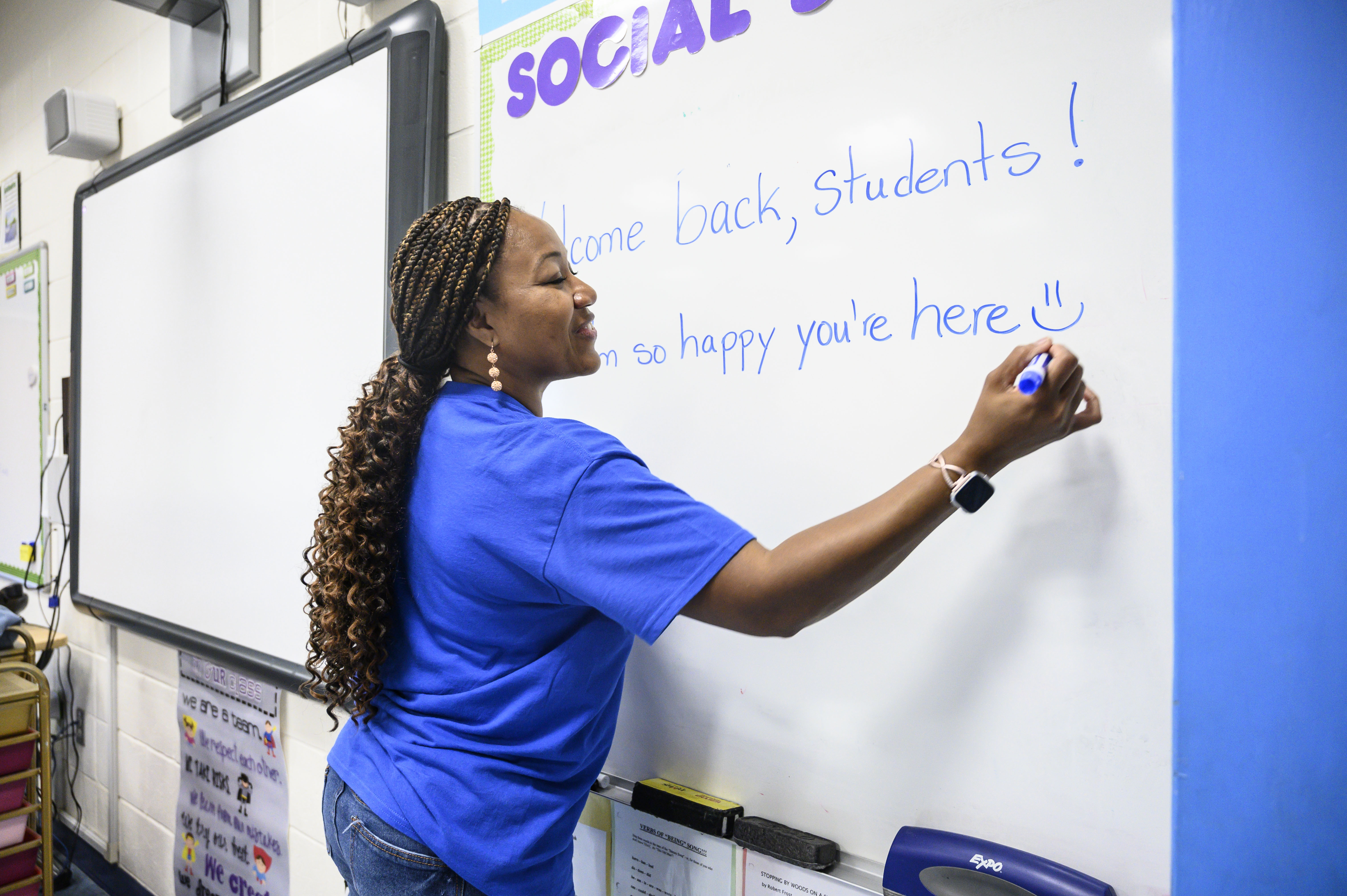Teachers and Doctors Are the Green Jobs of the Future

Credit to Author: Geoff Dembicki| Date: Fri, 06 Dec 2019 13:48:07 +0000
Picture the workers needed to build a less ecologically suicidal economy and who do you see?
Possibly a lot of people in hardhats carrying power tools. Maybe they are a bit grizzled from installing solar panels all day in the blazing sun or insulating buildings on a freezing winter day. Most likely the workers you imagine are men. And if the image you have is at all influenced by what you read about working-class people in the mainstream political press, those workers are probably white.
The definition of a "green job" needs to be much broader than that, however, argues a new paper from progressive think tanks the Century Foundation and Data for Progress. In reality, much of society's lowest-carbon, greenest work is performed by underpaid female healthcare workers and teachers, many of them not white. That recognition should be central to any campaign pushing for an economy-transforming Green New Deal, the authors believe, as well as a climate movement increasingly led by women of color.
"These are workers that society literally can't function without," Amanda Novello, a senior policy associate with the Century Foundation, said recently at a New York event discussing the report. "It's really important that we don't forget that the energy-driven economy we're all focusing on here is predominantly done by white men. In taking this bigger picture of an economy we want to have that's truly sustainable… We can't continue to leave out these women who are doing this crucial work that makes the economy possible."
The new report expands the standard definition of "green jobs" offered by environmental groups, think tanks and government agencies, which typically focuses on work in renewable energy, energy efficiency, and resource management. Those jobs are crucial to the United Nations’ goal of halving greenhouse gas emissions by 2030, the threshold beyond which climate impacts could begin spinning dangerously out of control. But as the report notes, this standard definition "heavily skews the green labor force as male." That creates a narrow view of the full workforce required to completely address our escalating environmental chaos.
No matter how successful we are at reducing the carbon that we release into the atmosphere, we are still locked into temperature rise that will result in more destructive wildfires, longer heatwaves, the spread of infectious diseases and other disasters that will harm people's well-being and put increasing strain on our healthcare system. Medical professionals, including nurses and home health aides, have green jobs.
So do teachers. The world needs many more educators—both to meet an increasing demand for climate change related curricula in the classroom, and to assist students struggling with the physical and emotional strains of a deteriorating natural world, a task that often falls, fairly or not, on teachers. "To build a sustainable society," the report reads, "education and educators are essential."
People doing the crucial work of caring for society's health and educating future generations—jobs that have a much smaller carbon footprint than those in fossil fuel production or many other planet-destroying industries—are disproportionately women. They represent 75 percent of all health care practitioners and 80 percent of elementary and middle school teachers, according to the report. Decades of budget cuts from state and federal governments have turned these jobs into some of our lowest-paying—the median healthcare support worker earns a below-poverty-level wage for example. And many of these jobs are done by women of color.
"We should start thinking more broadly about what a green job is," Julian Brave NoiseCat, director of Green New Deal Strategy for Data for Progress, argued at the New York event. "We often think about the blue-collar men who tend to be white as the workers who are going to move us to a low-carbon economy, but it's also often people taking care of our grandparents, it's the people teaching our children."
Related criticisms are being made about the climate movement as a whole these days. Cynthia Leung wrote recently in VICE that when she attended a meeting for the NYC chapter of the student climate organization Fridays for Future "most of the members were white and middle class." Taitana Garavito and Nathan Thanki similarly argued in VICE that groups like Extinction Rebellion need to do a much better job of reflecting the concerns and priorities of low-income people of color, "not only as a matter of morality, but as a matter of strategy." And NoiseCat has written in VICE that the environmental movement needs to reckon with its racist past.
With the push for a Green New Deal and other radically transformative climate policies coming most forcefully these days from people of color like Alexandria Ocasio-Cortez, the Sunrise Movement's Varshini Prakash, and U.S. Youth Climate Strike co-founder Isra Hirsi, and with teachers and healthcare workers increasingly emboldened to go on strike, some observers see an opportunity to grow and broaden the climate movement into something more inclusive and powerful than it has traditionally been.
As the Century Foundation report argues, broadening the definition of what green jobs means would also broaden the number of people willing to fight for them: "All of these workers can help lead the nation toward a more prosperous future, so long as they are accounted for in all green economy policies and programs." With the news about climate change getting worse and worse, it adds, "we don't have much more time to wait."
Sign up for our newsletter to get the best of VICE delivered to your inbox daily.
Geoff Dembicki is the author of Are We Screwed? How a New Generation Is Fighting to Survive Climate Change. Follow him on Twitter.
This article originally appeared on VICE US.